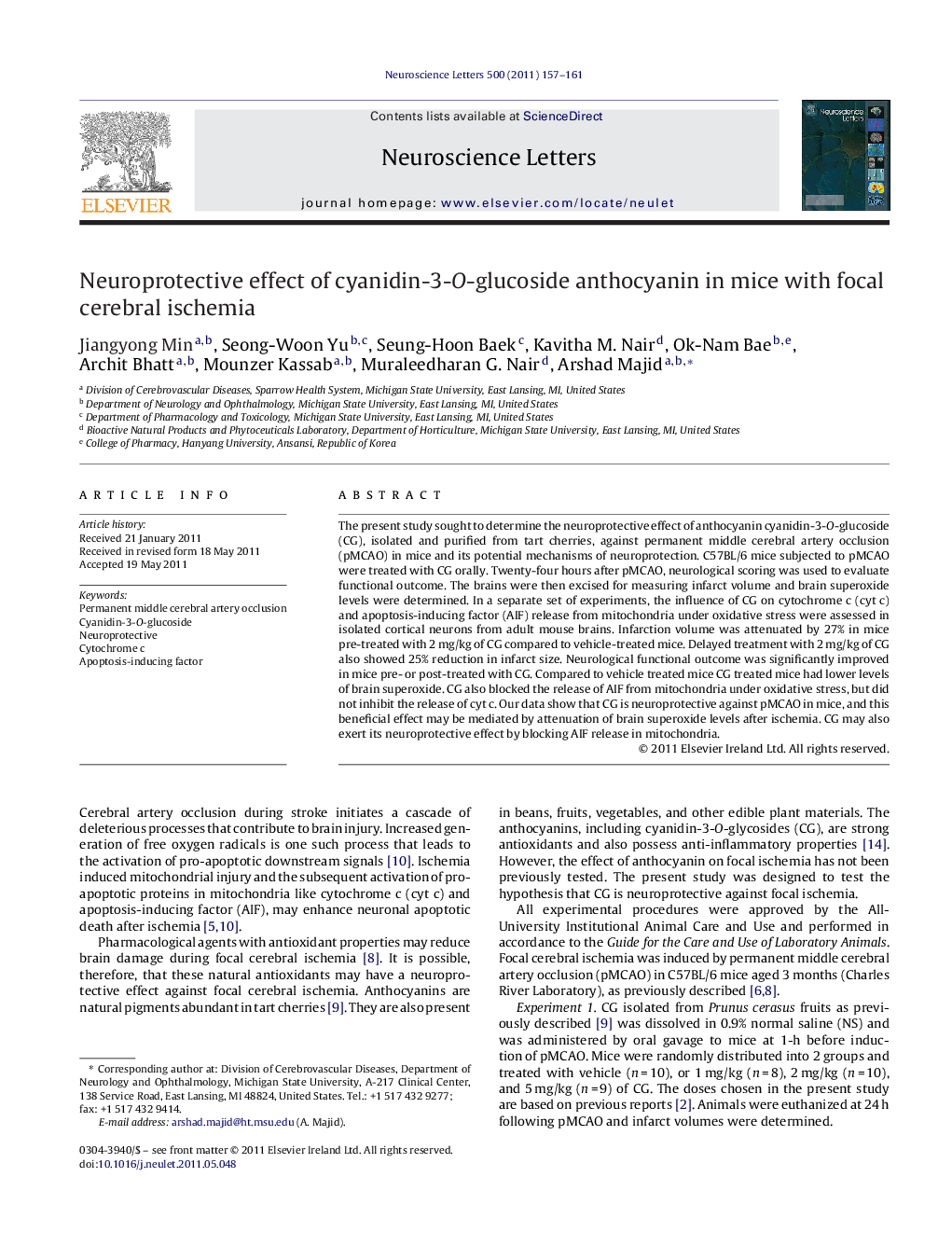| Article ID | Journal | Published Year | Pages | File Type |
|---|---|---|---|---|
| 4345227 | Neuroscience Letters | 2011 | 5 Pages |
The present study sought to determine the neuroprotective effect of anthocyanin cyanidin-3-O-glucoside (CG), isolated and purified from tart cherries, against permanent middle cerebral artery occlusion (pMCAO) in mice and its potential mechanisms of neuroprotection. C57BL/6 mice subjected to pMCAO were treated with CG orally. Twenty-four hours after pMCAO, neurological scoring was used to evaluate functional outcome. The brains were then excised for measuring infarct volume and brain superoxide levels were determined. In a separate set of experiments, the influence of CG on cytochrome c (cyt c) and apoptosis-inducing factor (AIF) release from mitochondria under oxidative stress were assessed in isolated cortical neurons from adult mouse brains. Infarction volume was attenuated by 27% in mice pre-treated with 2 mg/kg of CG compared to vehicle-treated mice. Delayed treatment with 2 mg/kg of CG also showed 25% reduction in infarct size. Neurological functional outcome was significantly improved in mice pre- or post-treated with CG. Compared to vehicle treated mice CG treated mice had lower levels of brain superoxide. CG also blocked the release of AIF from mitochondria under oxidative stress, but did not inhibit the release of cyt c. Our data show that CG is neuroprotective against pMCAO in mice, and this beneficial effect may be mediated by attenuation of brain superoxide levels after ischemia. CG may also exert its neuroprotective effect by blocking AIF release in mitochondria.
► Cyanidin-3-O-glycosides (COG) is neuroprotective against focal ischemic stroke. ► COG decreased brain superoxide levels and blocked AIF release from mitochondria. ► The cytochrome c-related cell death pathway does not appear to be involved.
